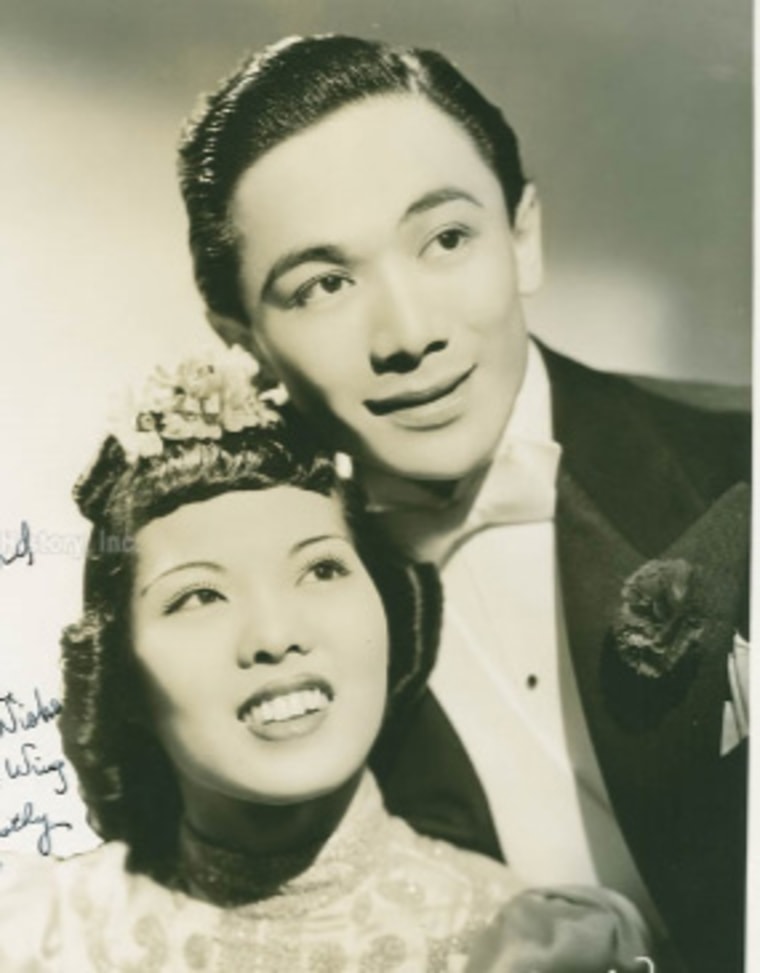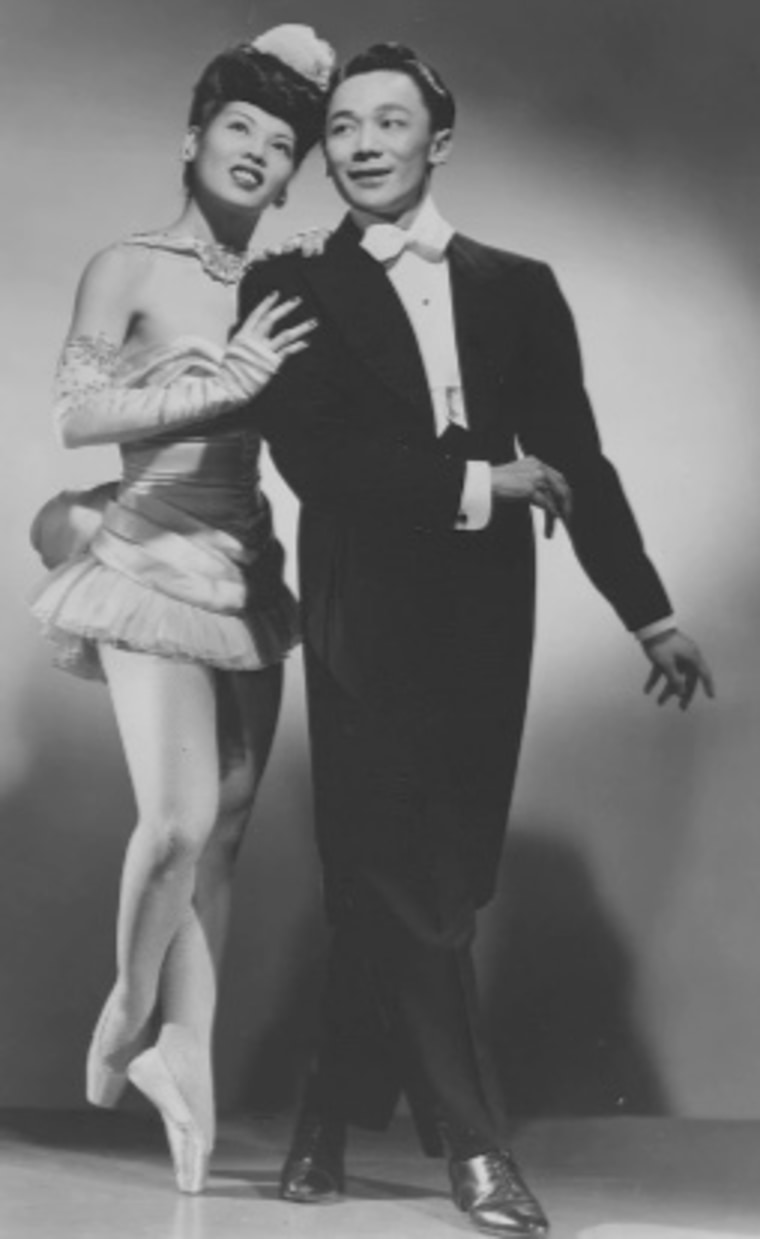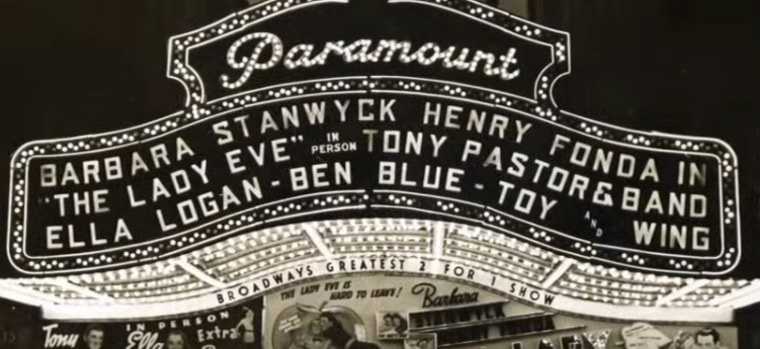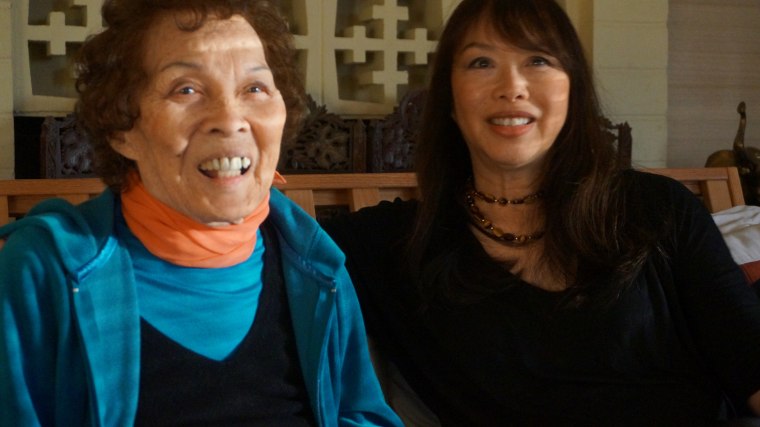Fred Astaire and Ginger Rogers are household names, but few know of the world-class footwork of Dorothy Toy and the late Paul Wing, an Asian-American dance duo who were at one point billed as “The Chinese Fred Astaire and Ginger Rogers.”
They overcame difficult odds as Asian Americans with careers in show business, dealing with the effects of World War II. But their dazzling style was evident in the 1937 short “Deviled Ham,” where Toy in particular counters Wing’s smoothness with her trademark acrobatic ballet fused with jazz and tap.
“I’m a toe-dancer,” Toy, now 99, told NBC News. “It’s comedy plus real ballet, and the public liked us, it made them feel us.”
Toy’s story will be told thanks to a new documentary, "Dancing Through Life: The Dorothy Toy Story," by veteran Bay Area journalist Rick Quan premiering Dec. 11 at the Great Star Theater in San Francisco’s Chinatown.
Toy, who was still teaching in her own studio until a hip injury this year, no longer dances. But she can still remember what it was like to dance her way through life.
“I feel like I’m in heaven,” she said, sitting in her living room. “It’s just something I love.”
RELATED: #UnderratedAsian Spotlights Asian Achievements Throughout History
The love for dance kept her going through the tough early days during the Depression. Toy packed up a Model T in San Francisco with all their belongings and moved to Chicago. In 1939, the Wing and Toy were signed by the William Morris Agency and then made their way to New York’s Broadway and beyond.
By 1940, they had performed in the London Palladium. A return to the west coast to Hollywood would be next with the promise of bigtime movie roles.

“I was Japanese and he was Chinese, we just said we were Asians that way a lot of nonsense, we didn’t have to go through,” she said.
But with Pearl Harbor and World War II, the nonsense could not be avoided.
Dorothy Toy, born Takahashi, was not of Chinese descent, as most people assumed. She was a Japanese American born and raised in San Francisco.
Soon after the war began, her family was interned in Topaz, Utah.
Toy avoided camp by leaving California for New York, but even then, gossip columnists like New York’s Walter Winchell talked about her being Japanese, she said. She remembers blacking out the newspaper columns with ink. The news cost her larger movie roles.
After all these years, Toy is more philosophical than bitter.
“We went through a lot of prejudice,” Toy says in the documentary. “But you have to face it.”
“We were happy with our work. And if [people] were discriminating, we’d say ‘why don’t you join us and we can do it together."
Toy said she and Wing handled the rough times with optimism.
“We were happy with our work,” she said. “And if [people] were discriminating, we’d say ‘why don’t you join us and we can do it together. We tried to be friends. We didn’t say, you are wrong, right, or nothing. And they were very nice later.”
The crushing blow came in 1943, when Wing was drafted into the military. They had been working with Leonard “Chico” Marx, and had to pull out of a job when Wing left for the Army. Toy said the way changed him and that things were never quite the same again.

After the war, they returned to their home base in California and performed in the legendary San Francisco nightclub, the Forbidden City.
There they found other Asian entertainers performing to mostly Asian and Asian American audiences. Toy found it comforting, and said she preferred the live stage over movies.
“When people are watching you and they’re really…you see their faces and they make you feel good,” she said. “Movies they’re just taking a movie. It’s not you. They can make you look good.”
On stage in a club or theater, Toy fed off the audience. “It makes you happy when you have a live audience,” Toy said, laughing. “They say, ‘That’s great,’ and you feel like a million dollars, that’s the kind of feel you get. But you don’t want the million, you just want the applause.”
Toy said she especially wanted to perform for other Asian Americans later in her career. She said she just wanted all the community to know what they did. Many Asian Americans didn’t know much about dance, similar to the way her parents were reluctant to let her enter show business.

“They knew restaurants, but they didn’t know dance,” she said. “They thought I was cuckoo.”
She was crazy — about dance, and it forced her parents to allow for dance lessons in a bartered arrangement with a local Russian ballet teacher: Lessons in exchange for food.
Toy’s own daughter Dorlie from a marriage to businessman Les Fong, also wanted to dance.
“It makes you happy when you have a live audience. They say, ‘That’s great,’ and you feel like a million dollars, that’s the kind of feel you get. But you don’t want the million, you just want the applause.”
“She started me dancing when I was 5, and I continued with ballet,” Dorlie Fong, who became a professional modern dancer, told NBC News.
Toy also taught Krista Marie Yu, who plays Molly on TV’s “Dr.Ken.” She started taking lessons from Toy at age 3 and still comes back to visit as she did last Thanksgiving, Toy said.
Fong said she’s proud of how her mom mixed different styles to create a popular “novelty” act. “The fact that they were Asian helped,” Fong said. “They were considered the Chinese Ginger Rogers and Fred Astaire.”
But she’s prouder still of how her mom overcame so much to express herself as an artist and how she let nothing get in the way of her love for dance.
It’s that story that sparked Quan’s interest when he first interviewed Toy in 2009 when she was 92 years old. Now the documentary is a fitting tribute to Toy, who will turn 100 in May.
“She’s an Asian American pioneer in entertainment,” Quan told NBC News. “Some people knew about her story, I felt that more people needed to know her story.”
Follow NBC Asian America on Facebook, Twitter, Instagram, and Tumblr.
